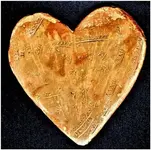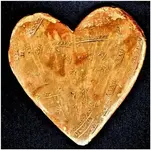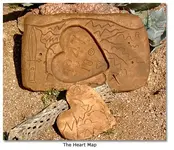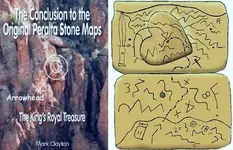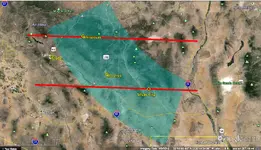Mike,
[Again, in 1698, Kino returned by way of Bac to the Gila; and from San Andres, the limit of the previous trip, or from the region of the Pima villages of modern maps, he crossed the country southwestwardly to Sonoita and the gulf shore; but unfortunately, Mange’s place was taken by Captain Carrasco, and no particulars affecting Arizona are extant. In the next tour of 1699 with Mange, he went first to Sonoita via Saric; and thence crossed north-westward to the Gila at a point about ten miles above the Colorado junction. The natives refused to guide him down the river where he had intended to go; therefore he went up the river eastward, cutting off the big bend, sighting and naming the Salado and Verde rivers, from a mountain top, reaching San Andres Coata where he had been before, and returning home by the old route via Encarnación, San Clemente, San Agustin, and Bac. In this trip he called the Colorado Rio de los Mártires, the Gila Rio de los Apóstoles, and the four branches of the latter–that is, the Salado, Verde, Santa Cruz, and San Pedro–Los Evangelistas.]
You could be right, but from what I have read he did not go north of the Gila River.
Take care,
Joe
Since there's very little in the way of rational discussion on this forum right now, I thought I'd take this up in debate.
Are you aware that on the 1702 map by Kino, there is a river on it called Rio Azul or Blau Fluss, both meaning "blue river," which later came to be known as the Verde river? As you may know the Verde River confluence isn't visible from anywhere but the Salt River Valley, so for him to have named it from a mountaintop south of the Gila isn't possible by any stretch of the imagination.
The idea that Kino marked the territory northeast of the Salt River "Moqui" is, as most are led to believe, rooted in his interest in meeting them with the goal of christening them. However, and conveniently, I may add, the naming of the Verde River originally as Rio Azul isn't an accident as Rio Azul is a name thought to have been connected to the legend of a mountain of gold, located somewhere in the vicinity of the Moqui villages, known as Sierra Azul. So Kino's goal of going there was probably twofold.
Mike,
I know it's in bad form to trust anything you read, but from what I have read of the Moqui Tribe, if Kino had reached their lands, chances are he would have died there. Very warlike people. Beyond that, neither Kino nor Manje mentioned any meetings with the Moqui. They were often mentioned as a tribe that Father Kino would have liked to see brought into the Catholic faith, as well as into the king's fold.
Why do you feel it is important to change accepted history and have Father Kino make it beyond the Gila?
Take care,
Joe
Manje did not travel with Kino on every one of his journeys as you know, he only traveled on a handful of Kino's tireless voyages. Many of those trips sometimes didn't even involve another white man, and sometimes even consisted just of Kino, his Indian servants, and a retinue of horses. As an interesting side note, the Salt River wild horses are rumored to have been introduced to the region from Kino's stock. He was known for running his horses into the ground.
So to take Manje's account of Kino as being comprehensive as far as a profile of Kino's journeys, is misleading.
And as we know, Kino's later journals and his astrolabe is missing, so likely we will never have a full understanding of what exactly he did in the Pimeria Alta.
Although Kino isn't recorded as having gone that far up north, Fr. Campos was. Fr. Campos had, in the words of none other than your favorite revisionist historian, Charles W. Polzer, "penetrated the White Mountains in search of the Moqui."
That would put him way north of the Gila River...... wouldn't it?




